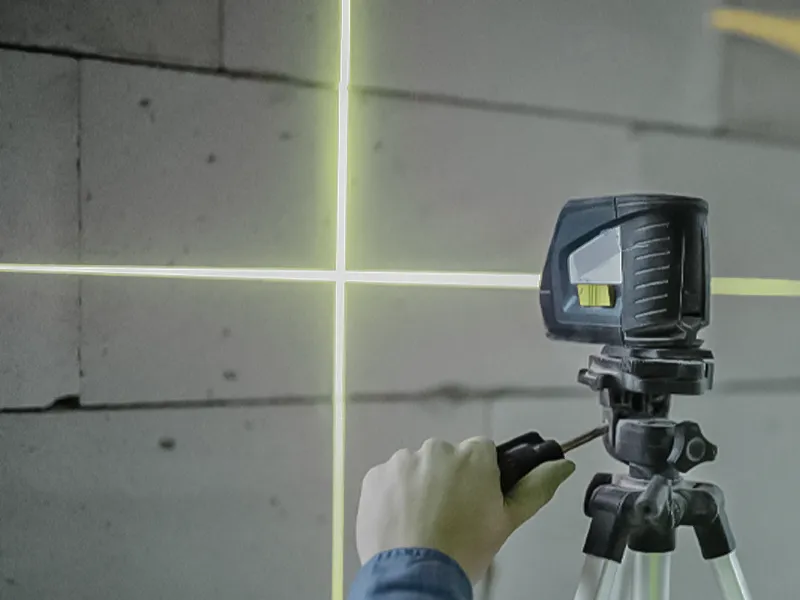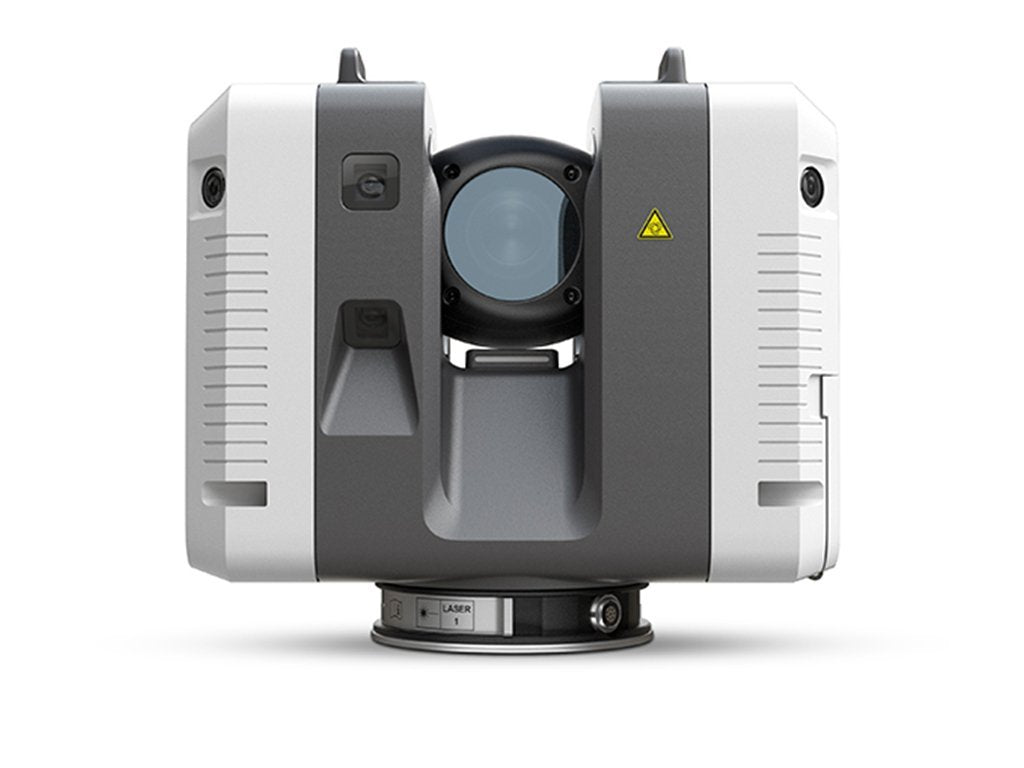Exploring the Applications of 3D Laser Scanning in Archaeology and Cultural Heritage Preservation
The integration of 3D laser scanning modern technology in archaeology and social heritage conservation marks a substantial advancement in exactly how archaeological sites and artifacts are documented and analyzed. This non-invasive method gives accurate spatial information, disclosing detailed details that were previously challenging to record. As the applications of this technology continue to progress, numerous implications for education and learning, documents, and preservation arise, inviting further expedition into its transformative influence on the area.
Understanding 3D Laser Scanning Innovation
3D laser scanning modern technology has revolutionized the area of archaeology by offering detailed and precise spatial data. This sophisticated modern technology utilizes laser beams to catch millions of data points from an item or website, producing a highly exact three-dimensional representation (3D Scanning). The resulting point clouds can reveal detailed information of historical sites, frameworks, and artefacts that could be unseen to the naked eye
Using this technology, archaeologists can record the exact measurements, forms, and settings of items with unmatched precision. This approach reduces the threat of human mistake and gets rid of the requirement for substantial hands-on measurements. The data gathered can be examined and shared conveniently, facilitating collaboration amongst researchers. By integrating 3D laser scanning with GIS and various other electronic tools, excavators enhance their ability to picture and interpret historic contexts, resulting in deeper insights right into old societies and environments.
Enhancing Archaeological Paperwork
3D laser scanning considerably enhances historical paperwork through its capability to create exact website maps. This innovation promotes detailed artifact evaluation, offering insights that typical approaches might forget. Additionally, it assures the preservation of contextual information, which is important for comprehending the relationships within archaeological websites.
Accurate Site Mapping
While conventional mapping methods commonly have problem with catching the detailed information of historical sites, advanced laser scanning modern technology uses a revolutionary approach to exact site mapping. This approach enables archaeologists to create highly described and specific three-dimensional depictions of websites, showcasing topographical variants and structural functions with remarkable integrity. The capacity to record millions of data points in a matter of mins permits comprehensive documentation, which can be conveniently updated and shared amongst scientists. Additionally, laser scanning promotes the measurement of intricate geometries that would be hard to assess making use of conventional tools. As an outcome, this technology enhances the accuracy of website maps, adding substantially to the preservation and understanding of social heritage sources.
Detailed Artifact Analysis
Laser scanning technology greatly enhances the evaluation of archaeological artifacts, offering scientists with unmatched detail and accuracy. This approach catches detailed surface area appearances, measurements, and features that traditional documentation techniques may neglect. By generating high-resolution 3D designs, scholars can carefully take a look at artifacts without the risk of damages inherent in physical handling. This precision enables better relative studies, making it possible for experts to identify production methods, stylistic variants, and potential cultural relevance. Additionally, the capability to adjust and visualize data in 3 measurements helps with a much deeper understanding of artefact functionality and usage. On the whole, laser scanning cultivates an extra comprehensive technique to historical documents, guaranteeing that vital details concerning artefacts is maintained for future study and education.
Preservation of Contextual Information
Protecting contextual data is vital for enhancing archaeological documentation, as it guarantees that searchings for are understood within their initial ecological and social frameworks. 3D laser scanning technology greatly adds to this conservation initiative by capturing detailed spatial relationships among artefacts, frameworks, and their settings. By creating precise 3D models, excavators can record the precise places and positionings of items in situ, assisting in a complete understanding of their context. This modern technology allows researchers to revisit and analyze websites long after excavation, keeping the stability of contextual info. In addition, electronic documents produced through scanning can be shared globally, cultivating joint research study and public engagement. Inevitably, protecting contextual data through 3D laser scanning improves archaeological narratives and advertises an extra extensive gratitude of cultural heritage.
Conservation of Cultural Heritage Sites
As improvements in technology remain to progress, the preservation of social heritage sites has actually ended up being increasingly dependent on innovative approaches such as 3D laser scanning. This innovation enables the thorough paperwork of artefacts, structures, and landscapes, recording their accurate measurements and spatial connections in a non-invasive fashion. By producing high-resolution 3D versions, researchers can check and examine deterioration patterns, allowing aggressive conservation methods.
Additionally, 3D laser scanning assists in the sharing of detailed website data with the international area, advertising collaboration among conservationists, archaeologists, and historians. These designs function as important sources for education and learning and public engagement, raising understanding of social heritage problems. The digital records created can safeguard versus loss due to ecological factors, vandalism, or disregard. In general, 3D laser scanning represents a transformative technique to the conservation of social heritage, making sure that these sites can be studied and valued by future generations.

Restoration and Repair Efforts
The thorough paperwork attained with 3D laser scanning plays a substantial function in reconstruction and restoration initiatives within archaeology. This technology gives precise dimensions and high-resolution images, enabling exact electronic designs of artefacts and structures. These versions work as crucial references throughout reconstruction processes, allowing excavators to visualize the original layout and make educated decisions regarding products and strategies needed for fixing.
3D laser scanning helps with the restoration of harmed or shed components by developing comprehensive replicas. This procedure help in ensuring that reconstructions keep historic integrity while also allowing for innovative methods to bring back sites. The capability to evaluate wear patterns and structural weaknesses with scanned data enhances understanding of a site's historical context and its use over time. 3D laser scanning not only preserves the physical aspects of cultural heritage yet additionally improves the story of background, assisting future repair ventures.
Educational and Research Study Opportunities
The combination of 3D laser scanning in archaeology opens considerable academic and research study opportunities. Academic cooperations can boost the understanding of old sites, while specialized training workshops gear up professionals with vital skills for using this innovation. Together, these campaigns cultivate a richer engagement with historical methods and methodologies.
Academic Collaborations in Archaeology
Collective efforts in archaeology have come to be progressively important for progressing both educational and research chances. By cultivating partnerships among universities, research institutions, and social heritage organizations, these collaborations help with the exchange of knowledge and sources, enhancing the quality of archaeological studies. Joint projects frequently leverage varied expertise, enabling for extensive evaluations and cutting-edge methods, particularly in the application of innovations like 3D laser scanning. Such partnerships likewise promote interdisciplinary strategies, involving areas such as background, preservation, and location scientific research. Additionally, scholastic partnerships frequently lead to the development of new curricula and training programs, preparing the following generation of archaeologists to successfully make use of sophisticated technologies in their job. Ultimately, these alliances contribute to the preservation and understanding of social heritage.
Training Workshops for Specialists
Training workshops for professionals in archaeology are increasingly crucial for improving abilities in the application of innovative modern technologies such as 3D laser scanning. These workshops provide participants with hands-on experience in making use of cutting-edge tools and software application, promoting a deeper understanding of information capture and evaluation processes. Professionals can learn to produce exact digital designs of historical sites, which considerably help in documentation and preservation initiatives. In addition, these training sessions frequently consist of conversations on ideal techniques and instance researches, promoting knowledge exchange among individuals. By buying continuous education, professionals can stay updated on advancing innovations, eventually enhancing the performance of their study and social heritage preservation efforts. This commitment click this to skill improvement is necessary for advancing the field of archaeology.
Future Patterns in 3D Laser Scanning for Archaeology
As developments in innovation remain to reshape various fields, the future of 3D laser scanning in archaeology assures to boost both the precision and efficiency of website documents and analysis. Arising patterns suggest a growing integration of expert system and device learning, promoting automated data handling and analysis. This advancement will allow archaeologists to analyze complicated datasets extra rapidly, resulting in faster insights into historical contexts.
In addition, the combination of drone technology with 3D laser scanning is likely to broaden, allowing complete aerial studies of historical sites that are challenging to access. The raising price of scanning devices will equalize accessibility, empowering smaller sized organizations and independent scientists to make use of these devices successfully. index Additionally, innovations in online reality and augmented fact will certainly enable immersive experiences for public interaction and education, making historical searchings for a lot more easily accessible and interactive. These fads jointly signal a transformative future for archaeology, improving conservation initiatives and broadening the self-control's outreach.
Frequently Asked Inquiries
Just How Much Does 3D Laser Scanning Equipment Expense?

What Are the Limitations of 3D Laser Scanning?
The constraints of 3D laser scanning include high expenses, possible information handling obstacles, level of sensitivity to ecological problems, and problem recording intricate information in complex surface areas, which can affect the precision and completeness of scanned depictions. (3D Scanning)

Can 3D Laser Scanning Be Made Use Of Undersea?
Yes, 3D laser scanning can be utilized underwater, however it needs specific equipment and methods to get over challenges such as water distortion and limited exposure. Successful applications have been demonstrated in aquatic archaeology and undersea studies.
For how long Does a Scanning Project Typically Take?
A scanning project normally takes anywhere from a few days to several weeks, depending upon the complexity and size of the location being checked, along with the prep work and post-processing demands associated with the job.
Are There Particular Software Program Demands for Handling 3D Scans?
Yes, certain software program needs for processing 3D scans consist of programs capable of taking care of large factor clouds, such as Autodesk Wrap-up, Cyclone, or MeshLab. These devices help with evaluation, visualization, and integration right into different applications successfully.
The combination of 3D laser scanning technology in archaeology and cultural heritage preservation marks a significant advancement in how historic websites and artifacts are recorded and examined. 3D laser scanning modern technology has transformed the field of archaeology by supplying detailed and specific spatial data. As developments in technology proceed to advance, the preservation of social heritage sites has actually come to be significantly reliant on ingenious techniques such as 3D laser scanning. As developments in innovation proceed to reshape different areas, the future of 3D laser scanning in archaeology guarantees to enhance both the precision and efficiency of site documents and analysis. The assimilation of Related Site drone technology with 3D laser scanning is most likely to increase, enabling detailed airborne studies of historical websites that are challenging to accessibility.